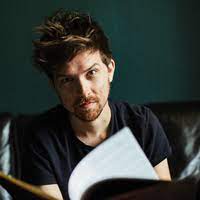Chi, the yin-yang, Lao Tzu — these are all important elements of the Tao. Both a religion and a philosophy, Taoism (also spelled Daoism) formed in China around 500 BCE and existed for millennia alongside other ancient belief systems, such as Buddhism and Confucianism. Although China’s communist turn in 1949 led to a ban on Taoism, the philosophy flourished in Taiwan and is now even returning to China.
Some 20 million people follow the Tao and the teachings of its ancient master, Lao Tzu. But many millions more simply find inspiration and wisdom in Taoism’s ideas, and its message has found its way into some of the most popular Western art and literature. Understanding Taoism starts with the elusive but essential concept at the core of the philosophy: the Tao, roughly translated as “the Way.”
The Tao
The Tao was first described in texts by the ancient Chinese philosopher Lao Tzu (or Laozi). Scholars aren’t certain that Lao Tzu existed or if he is a personification of ancient wisdom, but what can’t be debated is the existence of his attributed masterwork, the Tao Te Ching, which means “The scripture of the Way and Its Virtue.” This book is one of the fundamental texts of Taoism, along with Zhuangzi, a compilation of writings from the philosopher Zhuangzi, an influential Taoist master from the fourth century BCE.
In the Tao Te Ching, Lao Tzu attempts to illuminate the truth at the heart of his new philosophy, the Tao. The master described it as “undefined and complete” and “reaching everywhere.” He wrote, “It may be regarded as the Mother of all things. I do not know its name, and I give it the designation of the Tao.”
Taoism’s entire goal is to live in harmony with the Tao, or in other words, the natural balance of the universe. Taoists don’t believe in a single god, though they do venerate Lao Tzu as a personification of Tao. Instead, the religion features a host of gods, mostly borrowed from other cultures, and these beings are subject to the Tao just like humans. Because the Tao is the “mother of all things,” Taoists also believe the soul returns to the universe after death.
Wuwei and chi
Lao Tzu wished for his adherents to follow the “way” of the universe — but what exactly does that mean? That’s where a few of Taoism’s most famous principles come in handy.
The first is a concept known as “wuwei,” which literally means “inexertion,” as is described in the Tao Te Ching: “The Way does nothing, and yet nothing remains unaccomplished.” This is similar to the idea of letting go, or not trying too hard. It is perhaps best described in this quote attributed to Zhuangzi: “Happiness is the absence of the striving for happiness.” It’s this paradoxical idea of action through inaction that lies at the heart of wuwei.
“Chi,” which means “vital energy,” is defined as a primordial substance that animates the universe; examples can be found in wind blowing through trees or waves crashing upon the shore. Because Taoists believe they are of the universe, this chi also flows through them. The concept of chi has been used in medicinal and alchemical applications throughout Chinese history by Taoist sages who practiced influencing their chi for physical and spiritual wellness.
Many Taoists texts concern themselves with ways to live in harmony with this universal energy, which often manifests in the ideas of living simply, gaining wisdom through flexibility, and staying true to yourself. As Lao Tzu wrote, "Knowing others is intelligence; knowing yourself is true wisdom. Mastering others is strength; mastering yourself is true power." Benjamin Hoff, who analyzed Taoism through the character of Winnie the Pooh in his book The Tao of Pooh, also emphasizes this strong sense of self. “When you know and respect your Inner Nature, you know where you belong,” he wrote. “You also know where you don’t belong.”
The yin-yang
The most recognizable symbol of Taoism is the yin-yang, which literally means “dark-bright” or “positive-negative.” This concept is famously depicted as a black and white swirl that forms a circle, each containing a small “seed” of the other color. The yang (black) is often associated with the concepts of soft, positive, warm, dry, active, day, and masculine, while the yin (white) is hard, negative, cold, wet, passive, night, and feminine.
Neither yin nor yang is good or bad — according to Taoism, both are amoral if taken alone. Unlike monotheistic relations which depict a god as all good and a devil as all evil, Taoism, as symbolized in the yin-yang, teaches that both aspects of our nature can be great teachers, and only together can one truly be in accordance with the Tao. Lao Tzu only mentions the yin-yang once in the Tao Te Ching, but the work encapsulates the singular importance of this world-famous symbol: “A yin (with) a yang is called Tao.”
For millennia, Taoism has taught lessons of humility, gratefulness, and self-love while also probing the deeper meaning of our existence. However it’s explored, the ancient wisdom has many lessons to teach us, by following Zhuangzi’s simple-yet-difficult advice: “Flow with whatever may happen and let your mind be free. Stay centered by accepting whatever you are doing. This is the ultimate.”
Photo credit: xxwp/ iStock
















